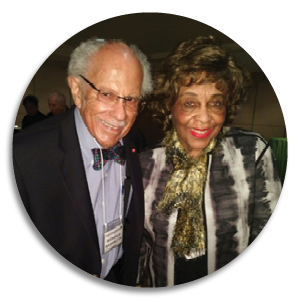Ways to Give to AMS
SUPPORT THE SCIENCE
THAT SAVES LIVES
WE ARE THE
AMERICAN METEOROLOGICAL SOCIETY
We are a diverse community of research scientists, broadcast meteorologists, educators, policy-makers, and weather enthusiasts.
We have spent the past century improving severe weather forecasts, pioneering scientific breakthroughs, and promoting the understanding necessary to ensure that our planet, and the people on it, can thrive.
YOUR DONATION SUPPORTS…
 |
Inclusion & | Belonging |
 |
The Next | Generation |
 |
K–12 | Education |
 |
Climate | Literacy |
 |
Early Career | Professionals |

Lena Dziechowski
University of Massachusetts Lowell
—Warren and Mary Washington
Read more giving stories

Other Ways to Give
Real estate
Put a specific property in a trust (not a charitable trust) with AMS as the beneficiary.
Charitable trusts
Put an asset like appreciated stock or the proceeds from your retirement plan in a testamentary charitable trust in order to let your children (or anyone else you care about) receive an income for a number of years with the remainder going to AMS when the trust term is over.
Payable upon death (POD)
Direct an immediate payment upon death, from a bank account or a brokerage account, to AMS and avoid probate and delays of payment.
Life insurance
Changing beneficiary designations or ownership of a life insurance policy is easy and costs nothing. Often a donor can simply download a form from the insurance company’s website, fill in the name of the charity as a beneficiary, and send it back.
You can easily make AMS a beneficiary of a life insurance policy (or one of the beneficiaries) or make AMS the owner of a paid-up whole life policy (and receive a tax deduction for this gift).
Example: Harold owns a paid up insurance policy he bought when he was 25, with a death benefit of $50,000 and a current cash value of $45,000. He long since finished making premium payments on the policy and no longer needs it. He can give the policy to AMS and receive a tax deduction for roughly the $45,000 cash value.
Example: Pete has a life insurance policy with a $100,000 death benefit. His children are the primary beneficiaries, and he wants them to benefit from the policy, but he also wants to leave a legacy. Thus he designates AMS as a 10% beneficiary of the policy, guaranteeing a $10,000 gift at his death.
Retirement plans [an IRA or a 401(k) or 403(b)]
Retirement plans are often one of the largest assets people have in their estate. If a donor leaves a portion of a qualified plan, like an IRA or a 401(k) to anyone other than a spouse, that person may have limited rights about withdrawing the money and will have to pay income tax on any money withdrawn. A nonprofit, however, pays no tax. Naming AMS as a partial beneficiary of a retirement plan is easy, often involving no more than changing a beneficiary online.
Example: Mary, who would like to make a gift through her estate, has an IRA worth $500,000. She can designate a percentage of her IRA to AMS. She saves all the potential income tax on the amount she gives without reducing her retirement income.
Example: Malcolm has a $500,000 403(b) that he has accumulated over the years. He would like to make sure his children can have the income from what is left in the plan after his death, but he does not want them to pay income tax on their inheritance. By designating a charitable trust the beneficiary of the plan and his children the income beneficiaries of the trust, he can avoid the upfront income tax, provide an income to his children, and make a long-term substantial gift to AMS.
Making AMS a beneficiary or a partial beneficiary of an estate is easy and clear. A simple codicil, or addendum, is all a donor needs. AMS can provide wording and instructions for making such a change. A donor can add to a will in several ways:
- Leave an outright gift of money in your will
- Leave a percentage of your estate
- Make the residual beneficiary of your estate
- Leave a specific asset in your estate (a piece of real estate, interest in a business, stock account, a savings account, a bond fund, etc.)
Example: As John would like to leave a legacy, he adds a codicil to his will providing that 10% of his estate, after the specific bequests he makes to family and friends, goes to AMS. John knows that he has provided a long-term benefit to a cause important to him.
By including AMS as a percentage beneficiary of your retirement plan, you are making a tax-wise and generous gift. The process is easy: simply download the beneficiary designation form from your IRA manager, add AMS to the beneficiary list, and resubmit the form. It is fast, easy, and free. And you retain total control over the plan during your lifetime. Should you list any beneficiary other than a spouse or a nonprofit like AMS, that person will have to pay income tax on the proceeds.
Example: Jeff, who is 71, has a large IRA. Because he is over 70, he must withdraw a required minimum distribution from that IRA and pay taxes on the amount he withdraws. All Jeff has to do is have his IRA manager send his required minimum distribution (RMD), or some part of that distribution, directly to AMS. Jeff then avoids the taxes on the amount he gives.
A gift from an IRA provides a unique tax advantage. When you receive your required minimum distribution (RMD) from an IRA, you pay taxes on that amount, but when you transfer money from an IRA to a nonprofit like AMS, you do not have to pay taxes on the amount you give. And you receive a credit for the amount you transfer against your RMD.
Example: Jeff, who is 71, has a large IRA. Because he is over 70, he must withdraw a required minimum distribution from that IRA and pay taxes on the amount he withdraws. All Jeff has to do is have his IRA manager send his RMD, or some part of that distribution, directly to AMS. Jeff then avoids the taxes on the amount he gives.
Support the mission of AMS and receive steady payments during retirement. A charitable annuity or trust may be right for you.
Charitable gift annuities (a gift that produces a lifetime income)
Example: Herb, age 57, is a successful DC professional who is not certain if/when he will retire. Herb puts the maximum he can into his 401(k) and would like to set aside even more if he could do so in tax-advantaged ways. Furthermore, he would like to lock in the value of the highly appreciated growth stock he bought for $25,000 that is now worth $100,000. If he gives the $100,000 to AMS for a deferred charitable gift annuity that begins when he turns 65, he will receive 6% (or $6,000) a year for the rest of his life, once he turns 65, and a tax deduction worth almost exactly what he paid for the stock.
Charitable trusts
Charitable remainder trust (a gift that produces a lifetime income)
Example: Helen owns considerable appreciated stock, but she does not want to give the stock away. Instead, by putting $100,000 worth of stock into a charitable remainder trust, she avoids all the capital gains tax, gets a tax deduction (in the year she sets up the trust), and has an income of at least $5,000 per year for the rest of her life with a good possibility of increased income as the trust grows in value.
Charitable lead trust (a gift that provides income to charity for a period of years and then returns the asset to the donor’s family without any tax)
Example: Adam owns an office building that he built some years ago for $1M. Renting regularly to doctors’ offices, Adam knows the building (now worth $5M) produces a steady income and is likely to appreciate still further in the future. Adam would like to give the building eventually to his two children. By placing the building in a charitable lead trust, Adam can make an annual gift to AMS of $300,000 for a set period of years, while, at the same time, he can transfer the building to his children with no gift or estate tax, no matter how much the building will be worth in the future.
Bargain sales (a sale to a charity for less than market value)
Example: Marilyn owns a piece of highly desirable real estate worth $100,000. She would like to make a gift but needs $40,000 to invest in another property. She can sell the property to AMS for $40,000, get a tax deduction for the $60,000 difference, and move forward with her new purchase.
One of the easiest and most tax-savvy ways of giving to AMS is to give appreciated assets, such as stock. When you give appreciated assets, you avoid all capital gains tax and get a tax deduction for the full amount of the gift, as long as you have owned the stock for at least a year.
Stocks, bonds, mutual funds, business interests
Example: George bought ABC stock when it was only $100/share. With ABC stock now valued at $550, he can give the stock to AMS, get an income tax deduction for the full $550/share market value, and avoid paying capital gains tax on the $450/share appreciation.
Example: Sam is the owner of a successful family business partnership. He is a 50% partner with his two sons, and he would like eventually to transfer controlling ownership to them. He can give a share of the business to AMS, get a tax deduction for its value, and then his sons can purchase the shares at some future date. He makes this gift every year, eventually transferring full ownership to his sons.
Appreciated real estate
Example: Sue owns a beach condo on Cape Cod that she purchased years ago for $100,000, which is now valued at $500,000. She used to visit regularly but now finds the condo has become a burden. She can give the condo to AMS, get a tax deduction for the entire $500,000, avoid paying tax on the $400,000 capital gain, and relieve herself of the expense of maintaining the property.

Partner with AMS
Opportunities exist, with varying financial commitments, for companies wishing to support AMS programs by providing thought leadership and engaging in activities that have a direct impact on the weather, water, and climate community.
Questions?
Stephanie Armstrong
Associate Executive Director
American Meteorological Society
617-226-3906
[email protected]
Donate by check
ATTN Development Office
American Meteorological Society
45 Beacon Street
Boston, MA 02108